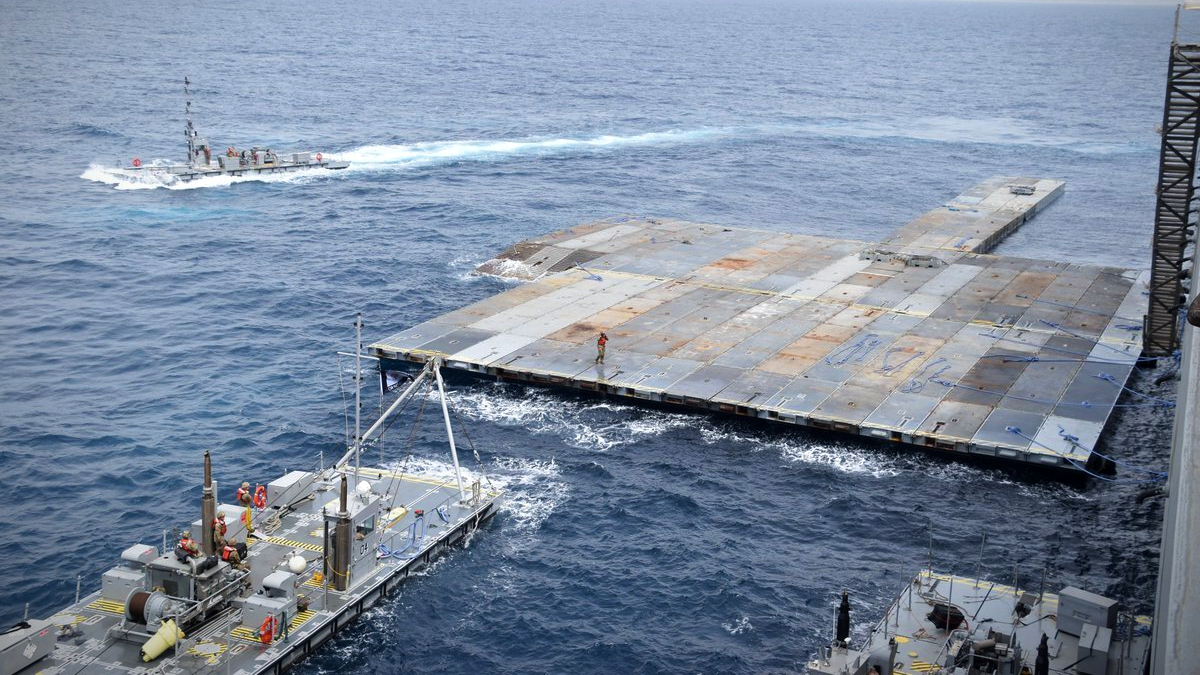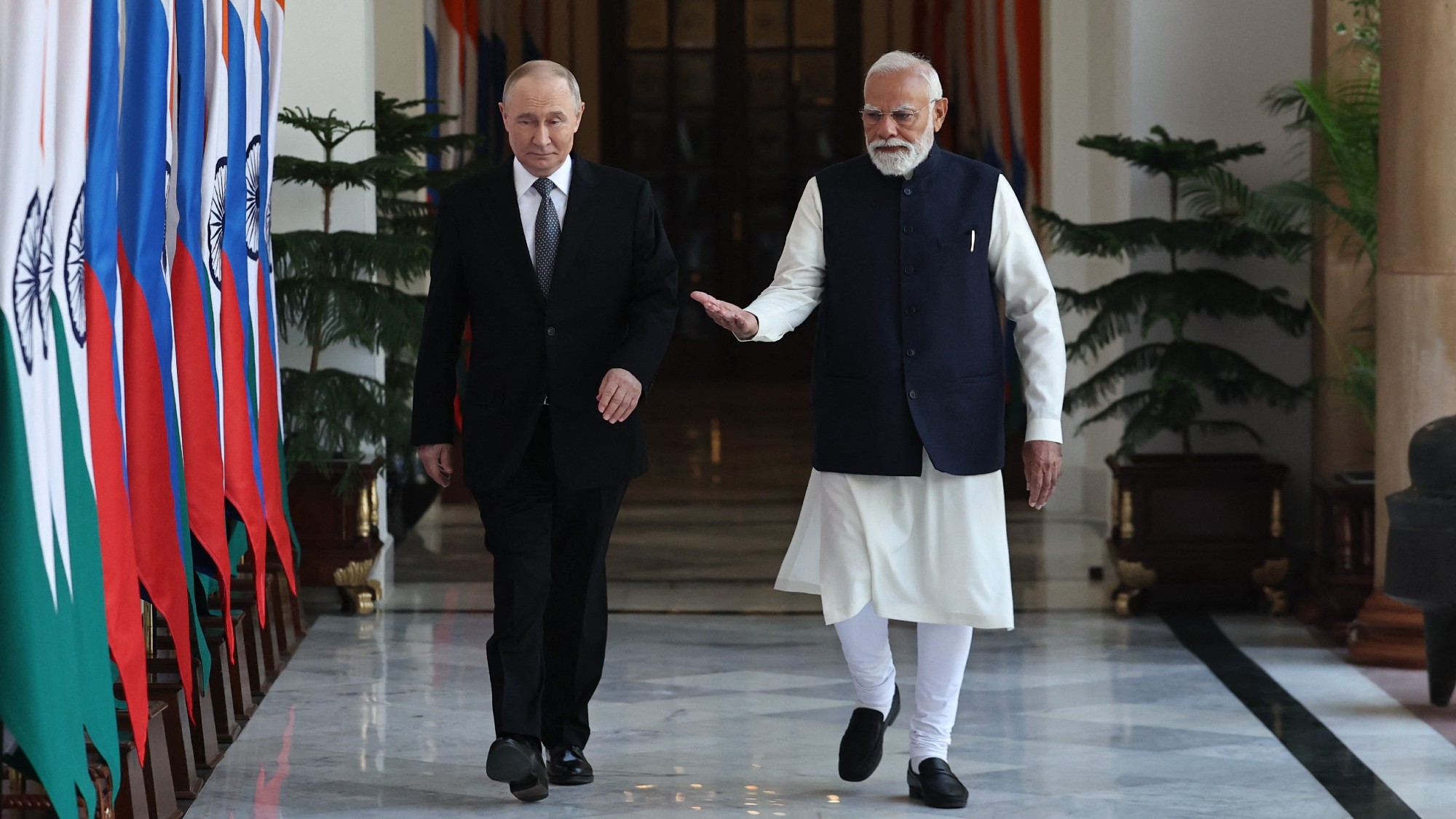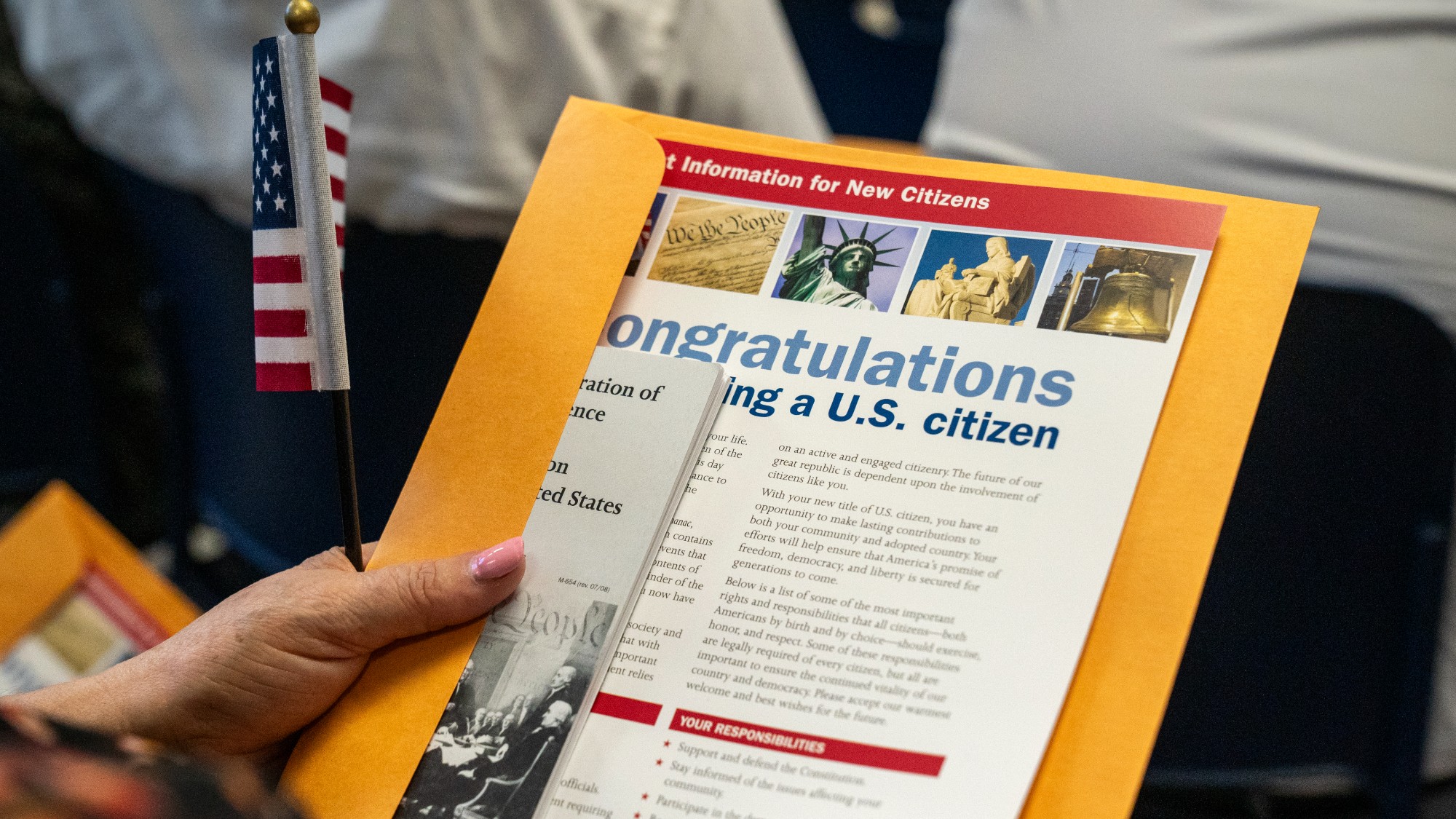US makes first Gaza aid delivery from floating pier
Israeli restrictions on border crossings have prevented food and supplies from reaching Gaza citizens


What happened
Trucks carrying humanitarian aid to Gaza from a newly built floating pier anchored in the Mediterranean began arriving on the Gaza shore Friday morning, the Pentagon said, a day after the U.S. finished constructing the quay.
Who said what
The delivery scheme — aid shipped from Cyprus is unloaded on a floating platform, then loaded onto Army trucks and transported by boat to the pier and causeway to shore, where it's transferred to the United Nations and aid organizations for delivery — is "fraught with logistical, weather and security challenges," The Associated Press said.
The pier-and-boat system is a "solution for a problem that doesn't exist," because cheaper and easier land crossings could bring in all the aid that's needed if Israel allowed it, said Oxfam's Scott Paul. Israel has closed the main land crossing in Rafah, and aid groups say they lack fuel, trucks and safety guarantees to deliver food throughout Gaza.
What next?
After initial test runs, the pier operation should bring in 150 aid trucks a day; U.N. officials say 500-600 are needed at minimum.
The Week
Escape your echo chamber. Get the facts behind the news, plus analysis from multiple perspectives.

Sign up for The Week's Free Newsletters
From our morning news briefing to a weekly Good News Newsletter, get the best of The Week delivered directly to your inbox.
From our morning news briefing to a weekly Good News Newsletter, get the best of The Week delivered directly to your inbox.
A free daily email with the biggest news stories of the day – and the best features from TheWeek.com
Peter has worked as a news and culture writer and editor at The Week since the site's launch in 2008. He covers politics, world affairs, religion and cultural currents. His journalism career began as a copy editor at a financial newswire and has included editorial positions at The New York Times Magazine, Facts on File, and Oregon State University.
-
 A luxury walking tour in Western Australia
A luxury walking tour in Western AustraliaThe Week Recommends Walk through an ‘ancient forest’ and listen to the ‘gentle hushing’ of the upper canopy
-
 What Nick Fuentes and the Groypers want
What Nick Fuentes and the Groypers wantThe Explainer White supremacism has a new face in the US: a clean-cut 27-year-old with a vast social media following
-
 5 highly amusing cartoons about rising health insurance premiums
5 highly amusing cartoons about rising health insurance premiumsCartoon Artists take on the ACA, Christmas road hazards, and more
-
 What is the global intifada?
What is the global intifada?The Explainer Police have arrested two people over controversial ‘globalise the intifada’ chants
-
 The issue dividing Israel: ultra-Orthodox draft dodgers
The issue dividing Israel: ultra-Orthodox draft dodgersIn the Spotlight A new bill has solidified the community’s ‘draft evasion’ stance, with this issue becoming the country’s ‘greatest internal security threat’
-
 Is a Putin-Modi love-in a worry for the West?
Is a Putin-Modi love-in a worry for the West?Today’s Big Question The Indian leader is walking a ‘tightrope’ between Russia and the United States
-
 ‘They’re nervous about playing the game’
‘They’re nervous about playing the game’Instant Opinion Opinion, comment and editorials of the day
-
 The US-Saudi relationship: too big to fail?
The US-Saudi relationship: too big to fail?Talking Point With the Saudis investing $1 trillion into the US, and Trump granting them ‘major non-Nato ally’ status, for now the two countries need each other
-
 Trump’s Ukraine peace talks advance amid leaked call
Trump’s Ukraine peace talks advance amid leaked callSpeed Read Trump’s envoy Steve Witkoff is set to visit Russia next week
-
 Memo signals Trump review of 233k refugees
Memo signals Trump review of 233k refugeesSpeed Read The memo also ordered all green card applications for the refugees to be halted
-
 Pentagon targets Kelly over ‘illegal orders’ video
Pentagon targets Kelly over ‘illegal orders’ videoSpeed Read The Pentagon threatened to recall Kelly to active duty
